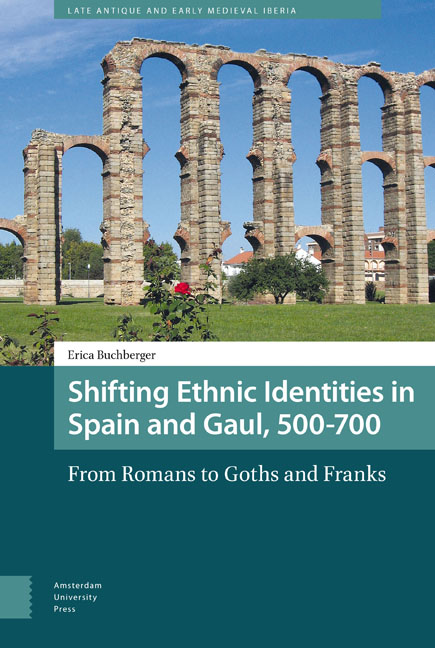3 - The Later Seventh Century
Published online by Cambridge University Press: 12 February 2021
Summary
Like 589, the year 654 was a turning point for discourses of identity in Visigothic Spain. It marks the end of the strong emphasis placed on Gothic identity during the first half of the century, with Isidore and various kings promoting the union of religious and political identity under the Gothic label. It was also the point at which differences between Romans and Goths – if any still existed – were formally eliminated in law. Clear statements that the whole Christian population should be treated equally appeared as kings reworked old laws that remained in use in a hodgepodge mix into a single code that would make unambiguous and uniform the law of the land.
Laws after this point, both civil and canon, would cease to refer to Romans and even Goths except in antiquated contexts, evidence that their authors no longer felt the need to specify their subjects’ ethnicity. They assumed the populace was homogenous and that in all ways that mattered, everyone in the Visigothic kingdom was to be considered a ‘Goth’. In place of Roman and Gothic, other identities came to be more salient, including factional loyalties between contenders for the throne and orthodox Christian identity in contrast with Jewish faith, practice, and ancestry.
The prime instigators of change this time, as in the 580s, were a father-son pair: the kings Chindaswinth and Recceswinth. This chapter will begin with them, including the church councils held under their reigns and the law code they compiled, known to us as the Visigothic Code. The second part of the chapter will examine the language of church councils from the year 666 on and of laws added to the Visigothic Code by Wamba, Ervig, and Egica. Finally, the evidence for all of sixth- and seventh-century Spain will be brought together into a coherent picture of the transformation of Romans to Visigoths to simply ‘our people’.
Chindaswinth, Recceswinth, and Visigothic Law
King Chindaswinth (r. 641-653) came to power at an old age after Gothic nobles deposed the previous king. His attempts to assert his authority included suppressing – and even killing – some elements of the nobility in favour of those loyal to him and enacting laws relating to treason and conspiracy. In 649, he made his son Recceswinth (r. 649-672) co-king, and together they undertook an extensive overhaul of the laws of the kingdom.
- Type
- Chapter
- Information
- Shifting Ethnic Identities in Spain and Gaul, 500–700From Romans to Goths and Franks, pp. 81 - 100Publisher: Amsterdam University PressPrint publication year: 2017



